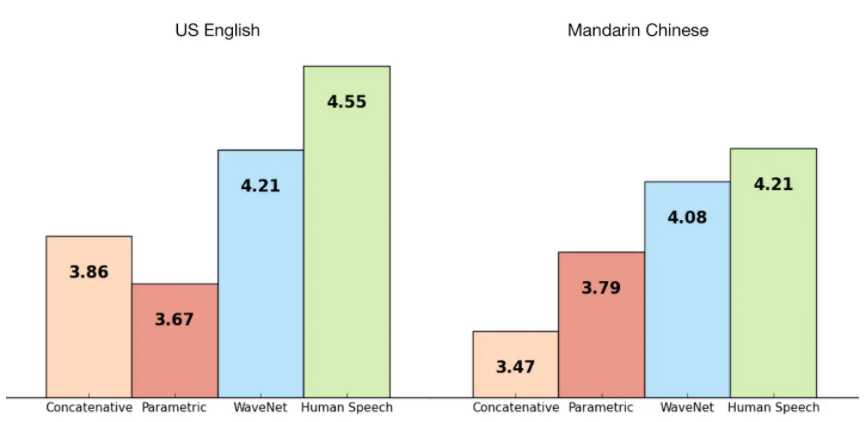Technology
Allowing people to converse with machines is a long-standing dream of human-computer interaction. The ability of computers to understand natural speech has been revolutionised in the last few years by the application of deep neural networks (e.g., Google Voice Search). However, generating speech with computers — a process usually referred to as speech synthesis or text-to-speech (TTS) — is still largely based on so-called concatenative TTS, where a very large database of short speech fragments are recorded from a single speaker and then recombined to form complete utterances. This makes it difficult to modify the voice (for example switching to a different speaker, or altering the emphasis or emotion of their speech) without recording a whole new database.
This has led to a great demand for parametric TTS, where all the information required to generate the data is stored in the parameters of the model, and the contents and characteristics of the speech can be controlled via the inputs to the model. So far, however, parametric TTS has tended to sound less natural than concatenative. Existing parametric models typically generate audio signals by passing their outputs through signal processing algorithms known as vocoders.
WaveNet changes this paradigm by directly modelling the raw waveform of the audio signal, one sample at a time. As well as yielding more natural-sounding speech, using raw waveforms means that WaveNet can model any kind of audio, including music.
WaveNet: A generative model for raw audio

Researchers usually avoid modelling raw audio because it ticks so quickly: typically 16,000 samples per second or more, with important structure at many time-scales. Building a completely autoregressive model, in which the prediction for every one of those samples is influenced by all previous ones (in statistics-speak, each predictive distribution is conditioned on all previous observations), is clearly a challenging task.
However, PixelRNN and PixelCNN models, published earlier, showed that it was possible to generate complex natural images not only one pixel at a time, but one colour-channel at a time, requiring thousands of predictions per image. This inspired us to adapt our two-dimensional PixelNets to a one-dimensional WaveNet.

The above animation shows how a WaveNet is structured. It is a fully convolutional neural network, where the convolutional layers have various dilation factors that allow its receptive field to grow exponentially with depth and cover thousands of timesteps.
At training time, the input sequences are real waveforms recorded from human speakers. After training, we can sample the network to generate synthetic utterances. At each step during sampling a value is drawn from the probability distribution computed by the network. This value is then fed back into the input and a new prediction for the next step is made. Building up samples one step at a time like this is computationally expensive, but we have found it essential for generating complex, realistic-sounding audio.
Improving the State of the Art
We trained WaveNet using some of Google’s TTS datasets so we could evaluate its performance. The following figure shows the quality of WaveNets on a scale from 1 to 5, compared with Google’s current best TTS systems (parametric and concatenative), and with human speech using Mean Opinion Scores (MOS). MOS are a standard measure for subjective sound quality tests, and were obtained in blind tests with human subjects (from over 500 ratings on 100 test sentences). As we can see, WaveNets reduce the gap between the state of the art and human-level performance by over 50% for both US English and Mandarin Chinese.
For both Chinese and English, Google’s current TTS systems are considered among the best worldwide, so improving on both with a single model is a major achievement.

GSpeech has AI voice synthesis algorithm, which is some of the most advanced and realistic in the business. Most voice synthesizers (including Apple’s Siri) use what’s called concatenative synthesis, in which a program stores individual syllables — sounds such as “ba,” “sht,” and “oo” — and pieces them together on the fly to form words and sentences. This method has gotten pretty good over the years, but it still sounds stilted.

WaveNet, by comparison, uses machine learning to generate audio from scratch. It actually analyzes the waveforms from a huge database of human speech and re-creates them at a rate of 24,000 samples per second. The end result includes voices with subtleties like lip smacks and accents. When Google first unveiled WaveNet in 2016, it was far too computationally intensive to work outside of research environments, but it’s since been slimmed down significantly, showing a clear pipeline from research to product.
